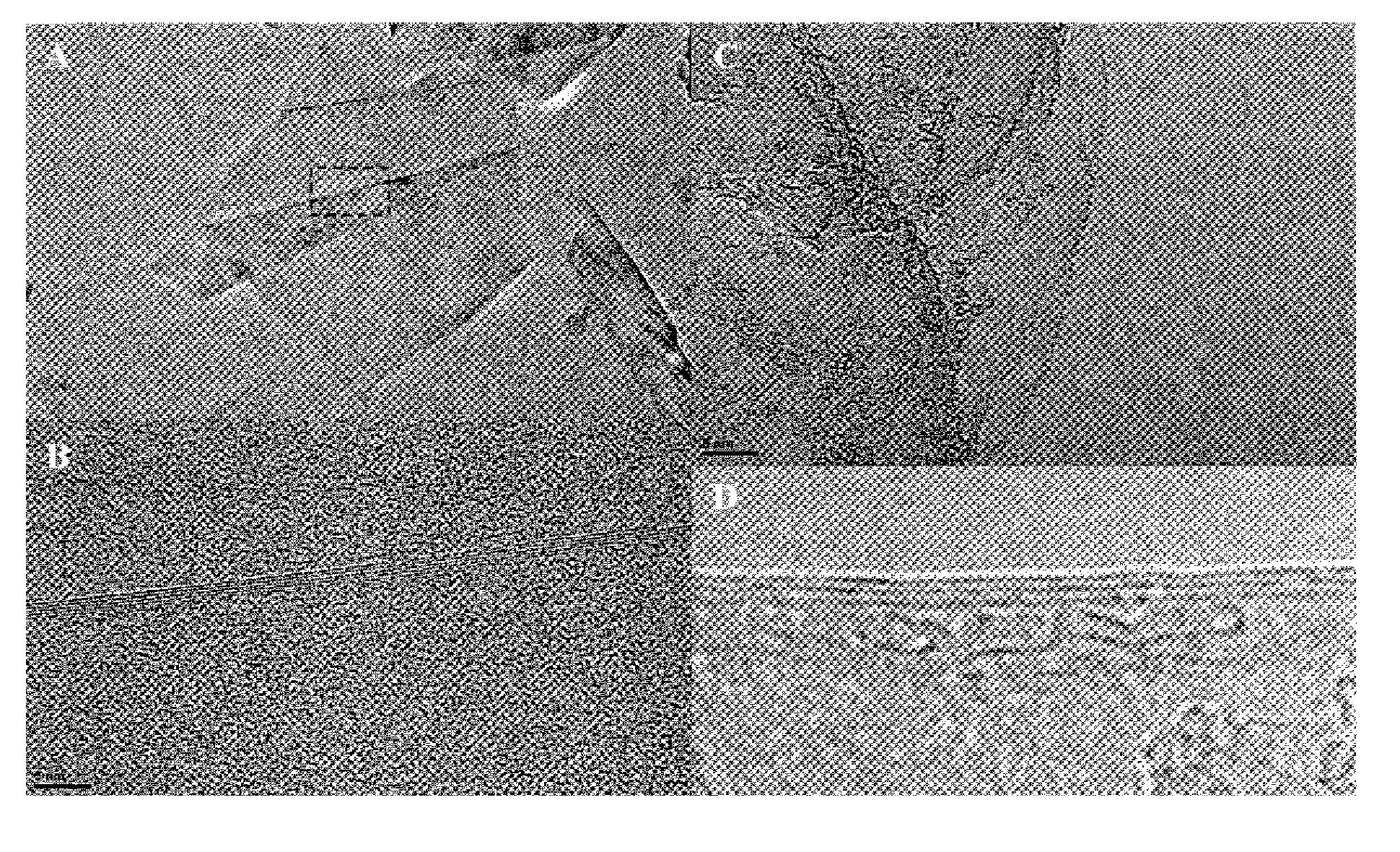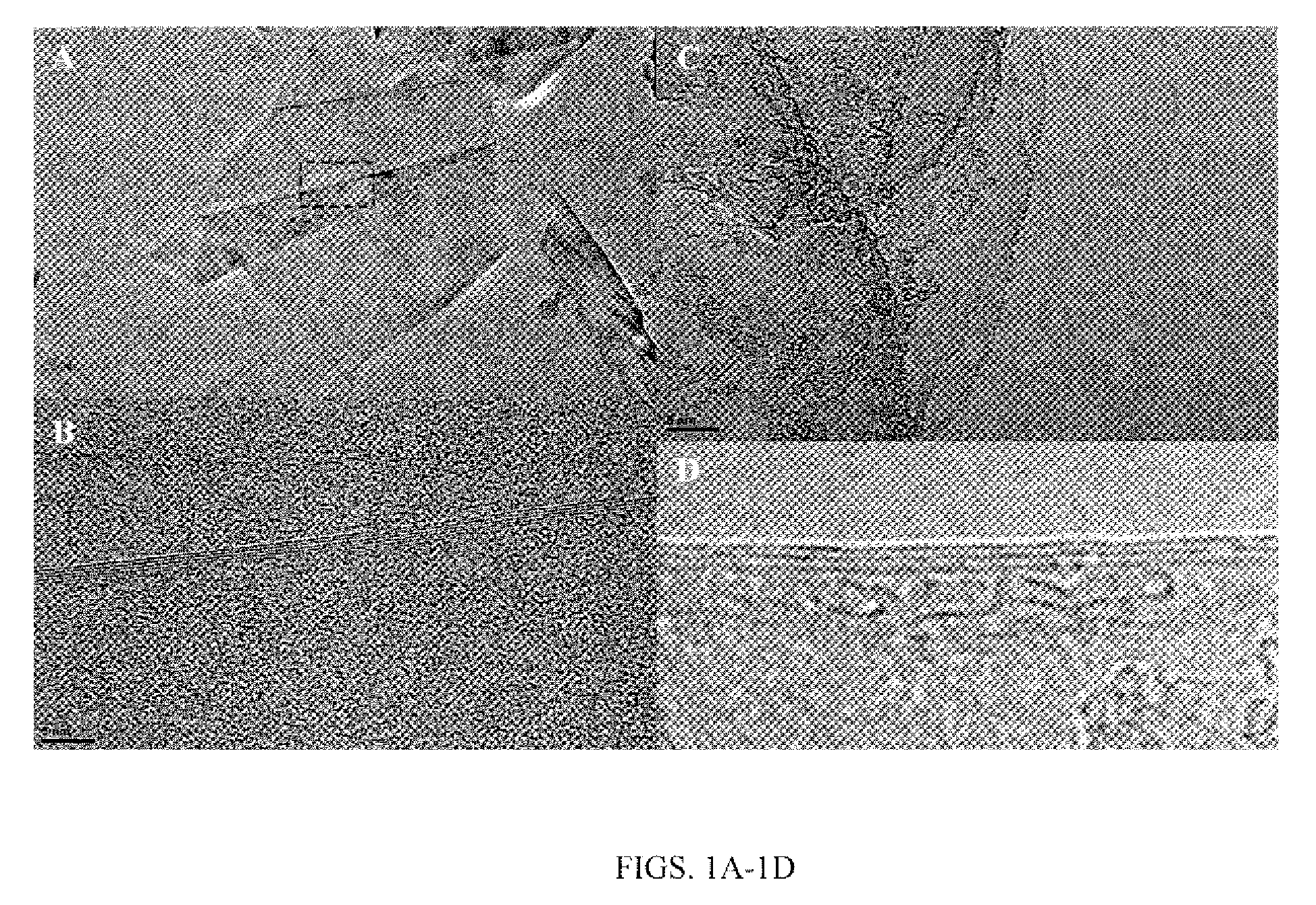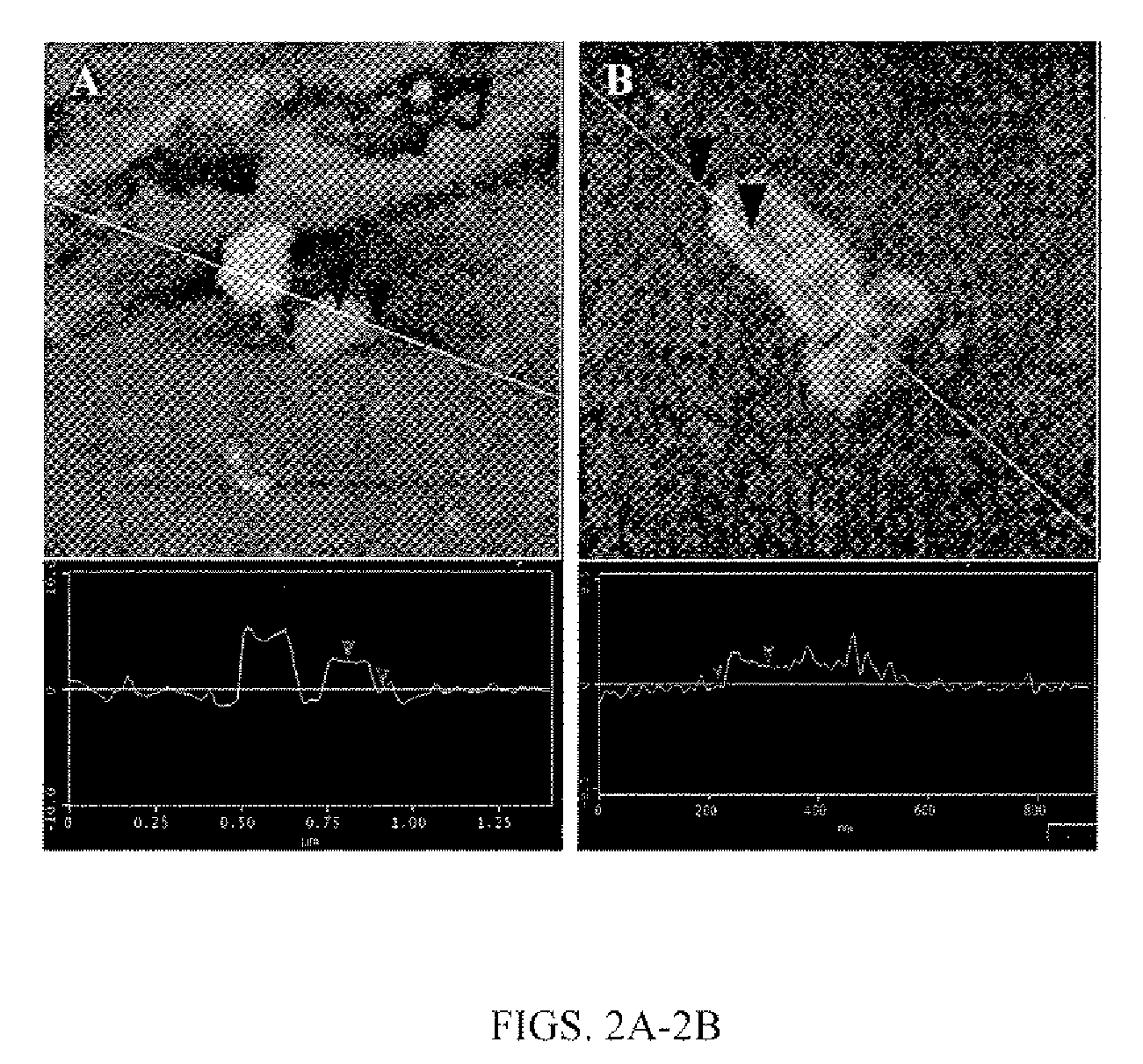Method for exfoliation of hexagonal boron nitride
a hexagonal boron nitride and crystal technology, applied in chemical/physical processes, energy-based chemical/physical/physical processes, peptides, etc., can solve the problems of different h-bn nanostructures, unable to be used in freestanding forms such as coatings and composites, and are electrically insulating. , to achieve the effect of excellent heat dissipation
- Summary
- Abstract
- Description
- Claims
- Application Information
AI Technical Summary
Benefits of technology
Problems solved by technology
Method used
Image
Examples
example 1
Exfoliated h-BN Nanosheets from Thermal Reaction of As-Received h-BN with Octadecylamine
[0031]The as-received h-BN powder (50 mg, UK Abrasives, size −10P, lot HZ010PA4.$06) and octadecylamine (500 mg, Aldrich) were mixed and stirred in a round-bottom flask and heated to ˜160° C. for 6 days under steady nitrogen flow. Upon cooling the reaction mixture to room temperature, tetrahydrofuran (THF, ˜15 mL) was added, and the slurry was briefly sonicated and centrifuged (˜5000 rpm, 10 min) for the collection of the transparent but slightly milky supernatant. The extraction cycle was repeated a few times, and the supernatants were combined to obtain a THF dispersion of exfoliated h-BN nanosheets. THF could be evaporated to obtain the exfoliated h-BN nanosheets as solid powder, which could be re-dissolved into THF and other organic solvents such as chloroform.
[0032]FIG. 2A shows the exfoliated h-BN nanosheets from treatment of as-received h-BN with octadecylamine.
example 2
Exfoliated h-BN Nanosheets from Thermal Reaction of As-Received h-BN with Amine-Terminated Poly(ethylene glycol)
[0033]The as-received h-BN powder (50 mg, UK Abrasives, size −10P, Lot HZ010PA4.$06) and amine-terminated poly(ethylene glycol) (500 mg, Aldrich, molecular weight˜1,500) were mixed and stirred in a round-bottom flask and heated to ˜160° C. for 6 days under steady nitrogen flow. Upon cooling the reaction mixture to room temperature, water (˜15 mL) was added, and the slurry was briefly sonicated and centrifuged (˜5000 rpm, 10 min) for the collection of the transparent but slightly milky supernatant. The extraction cycle was repeated a few times, and the supernatants were combined to obtain an aqueous dispersion of exfoliated h-BN nanosheets. Water could be evaporated to obtain the exfoliated h-BN nanosheets as solid powder, which could be re-dissolved into water and some organic solvents such as chloroform.
[0034]FIGS. 1A-1D are transmission electron micrographs showing the m...
example 3
Exfoliated h-BN Nanosheets from Thermal Reaction of h-BN (from Ball-Milling of 10 Minutes) with Octadecylamine
[0035]The as-received h-BN powder (1 g, UK Abrasives, size −10P, Lot HZ010PA4.$06) was subjected to ball-milling (SPEX CertiPrep 8000D High-Energy Shaker Mill) for 10 minutes. The h-BN powder thus obtained (50 mg) was subject to the same reaction with octadecylamine (500 mg) and work-up process as those described in Example 1. A THF dispersion of exfoliated h-BN nanosheets was obtained. THF could be evaporated to obtain the exfoliated h-BN nanosheets as solid powder, which could be re-dissolved into THF and other organic solvents such as chloroform.
PUM
| Property | Measurement | Unit |
|---|---|---|
| time | aaaaa | aaaaa |
| thicknesses | aaaaa | aaaaa |
| area | aaaaa | aaaaa |
Abstract
Description
Claims
Application Information
 Login to View More
Login to View More - R&D
- Intellectual Property
- Life Sciences
- Materials
- Tech Scout
- Unparalleled Data Quality
- Higher Quality Content
- 60% Fewer Hallucinations
Browse by: Latest US Patents, China's latest patents, Technical Efficacy Thesaurus, Application Domain, Technology Topic, Popular Technical Reports.
© 2025 PatSnap. All rights reserved.Legal|Privacy policy|Modern Slavery Act Transparency Statement|Sitemap|About US| Contact US: help@patsnap.com



